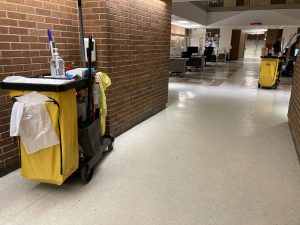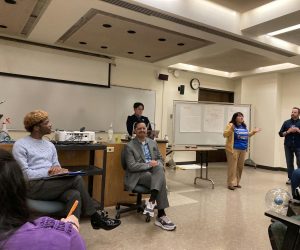Student Loan Forgiveness: A Good First Step
October 4, 2022
On Aug. 24, 2022, President Joe Biden announced that he would be canceling thousands of dollars in federal loan debt for individual students. Specifically up to $20,000 for Pell Grant recipients and up to $10,000 for all other borrowers. This is one aspect of a three-part plan to reduce the debt burden of higher education.
Educational debt is a huge problem in this nation. Not only does the US have the most expensive education in the developed world, but almost the full burden of its cost is on students and their families, as opposed to heavy government subsidies, as in many of our peers in Europe. The cost is extreme enough to force most students to take on debt, and that debt is structured in an extremely predatory manner. Compound interest means that even after the principal, the initial loan amount, has been paid off, students are still paying off the interest. Student loans are not eligible for bankruptcy protection. According to the Education Data Initiative, it takes American students an average of 20 years to pay off the debt, despite most plans being set up to be paid off in 10 years. While there are loan forgiveness programs for public service, military service, and working in underserved communities, these programs are limited in scope and difficult to navigate.
We have all come to school for various reasons: to better ourselves intellectually, to learn new skills and to improve our employment prospects, among others. One of the greatest values of higher education – one that we have been told throughout our primary education – is that it is the gateway to higher-wage jobs. However, as the cost of a four-year college education has almost tripled since 1980, according to the White House, paying off those debts has made taking advantage of the higher wages exceedingly difficult for many, as much of their earnings go back to paying off debts that our peers in other countries never accrue. Even the threat of student loan burdens can discourage people from getting a higher education, as it did me for many years.
In the long run, $10,000 to $20,000 is not a lot, compared to total debts which can easily range into hundreds of thousands of dollars, but this will wipe out debt for millions of students. There is also something to be said about the psychological impact of having massive amounts of debt hanging over one’s head. Reducing that by any amount is worth it, I think, simply for the breath of fresh air. Even with debt payments paused right now, that extra cash is not making a large impact on inflation. This also only applies to current debt holders. As of right now, the predatory practices that caused this debt in the first place will still victimize future students.
At the end of the day, this is simply a good first step to solving the student debt crisis that is plaguing students, graduates and those who never got their degrees but nevertheless still owe substantial amounts of money. The way we fund education in this country desperately needs to be restructured to allow more people to be able to take advantage of it. Having a more educated populace is a net gain for all of us and necessary for a healthy democracy. This debt forgiveness is a drop in the bucket, but it is a boon for each individual who receives it. The true value of this is that it opens the door to future actions on student debt. It normalizes the conversation and increases pressure on the current and future administrations and congresses to take action to restructure and better fund our nation’s higher education system.









